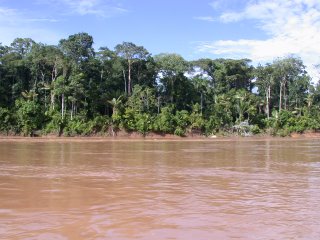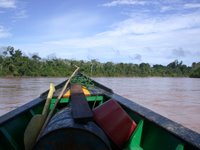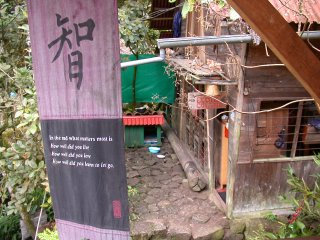 In May 2005 my husband and I trekked 30 miles through the Andean highlands. The day we crossed the Continental Divide, at Punta Union, was the highlight of our trip…
In May 2005 my husband and I trekked 30 miles through the Andean highlands. The day we crossed the Continental Divide, at Punta Union, was the highlight of our trip…La Cordillera Blanca, a cirque of towering white spires, glows pink in the early sunlight and we linger a moment before departing our campsite. The locals believe each peak is home to a spirit. I imagine these native deities, or ‘Apus’, formless creatures beneath the snow and stones, stirring every so slightly as the face of the world turns toward the Sun. Today is the day we climb, then cross, the spine of the world, along the arc of the Andes. We will haul ourselves up and over the shoulder of the mountain the natives call ‘Taulliraju’, or ‘Lupin-Mountain.’
We begin our ascent through a forest of shrubby trees whose bark, burnt in the tropical sun, peels away like rusty red rice paper. Silver-green leaves dangle motionless in the thin air. Every breath explodes in a small white puff as I gain momentum and we march up the trail. Behind us, a burro brays, perhaps in protest at having to carry our food and camp supplies. We meet a mule train coming the opposite direction and exchange a ‘Buenos dias’ with the driver. Our guide, Ricardo, stops to chat with him a moment. They speak in the rolling, gutteral tones of quechua, with an occasional Spanish word tossed in. I understand nearly nothing. The local dialect is like a mixed salad of languages – and I can only eat the carrots. I learn later that this man is heading home, to the village we passed yesterday. This village – a series of farmhouses, build of mud and straw and separated by fields of corn, quinoa and potatoes, splayed out along the slope of the mountain, above and below us along the trail. Some homes had golden maize and peppers with leathery red skin strung from twine in their yards. Women in dusty skirts and dark hats, tending to their homes or hauling firewood or babies in festive shawls, greeted us with friendly smiles. Children scrambled up to ask us for their favorite treat, ‘caramelos’, though we hadn’t anticipated that, and had none to give.
But today we have left the bustle of activity behind us. Now, we emerge from the disorder of the forest, onto the steep, open grassland. Ahead, trails crisscross the gray slopes of the mountains, the only markers of humanity on these timeless crags. I strain for each breath in the crisp air. A small notch in a black wall of rock, another 2000 feet up, marks our goal. For a time I find it difficult to peel my eyes from the trail. My feet move to the beat of a rock song that has found its way into my mind – “This is how you remind me of what I really am…” – by Nickelback. Those are the only words I can remember, but I sing them over and over again. My heart in my head also has a rhythm, out of step with the music – it’s more of a primal drumbeat. The tufts of stiff grass that populate the highlands melt away, and now, at 15,000 ft, we tread over simple, bare rock. We climb the last few hundred feet along a winding stone staircase built by the Incas, and emerge, at the top of the pass – on the shoulder of Taulliraju.
Taulliraju: He’s like an old man with a craggy white beard, thinning abruptly into a gray cascade of andesite. He is timeless in our minds, but young on the face of the Earth. Born in a sea of hot fire, cooked in Earth’s cauldron, and infused with the recycled elements of the ocean floor. Slowly rising over the eons to his full stature. Now he towers silently over the sea, breathing in time to the rhythm of the tides. A slow, steady inhale, then a rumble of thunder and a puff of white in the exhale. Woe to any creatures who happen to be playing in his beard on the exhale.

My skin tingles here, so close to the sun. Intense rays of midday light flood the landscape. There are no shadows. Scanning the rocky horizon prompts a dull, but increasingly loud ache behind my eyeballs. I try to turn away, but the jagged contrast between the snow-capped peaks and the tropical sky compel my gaze. Gray, white, and blue - the color of an endless summer. This is a place there the gods have walked, so the locals believe. And now I can believe it too - this is a city of gods, on the edge of the sky, a place where heaven meets earth. The locals also believe that the retreating snowline is a sign that the gods are leaving. When the snow is gone, the land will become stark and dry and fruitless. I marvel at such grandeur, and find it hard to believe it is in such a fragile balance. But such is the state of the Earth. Even the mountain gods live and die in time.







